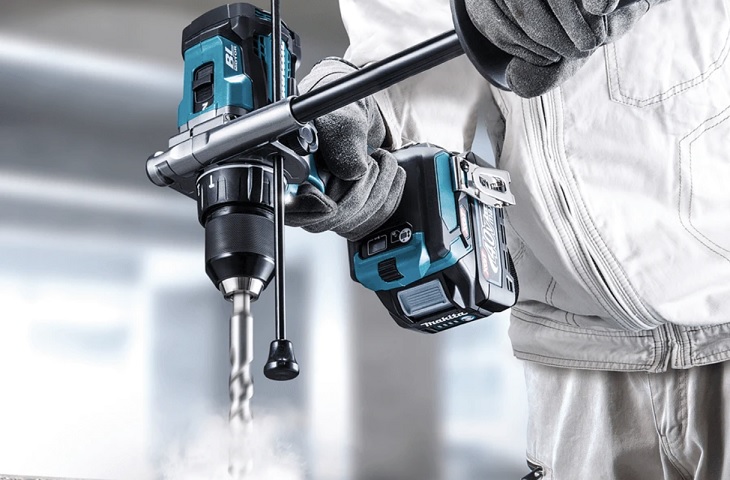
1915 was the year that signifies the birth of a company that helped propel the use of power tools at large. Although Makita’s early beginnings weren’t as innovative they still relied on the use of electricity since they sold electric motors. Makita’s goal was always closely tied with electric power. This has continuously been the case since 1958 when the company’s first power tool was made available to the public.
Over the years Makita has been producing various different power tools, both corded and cordless with the first cordless tools being made in 1978. Ever since Makita has been big on making powerful cordless tools more portable and available to more people. The same can be said for one of the most popular cordless tools, the drill.
What to Look for In a Makita Drill
Power
When it comes to the power of every cordless drill or any power tool for that matter voltage is what matters. The more volts a cordless drill has the higher the torque-spinning strength it can generate. Top-tier Makita drills can have up to 18V of power with most of them having 9.6V but they don’t make for a walk-in-the-park drilling experience. Keep in mind that when you buy Makita drill with lots of volts you’re also getting a lot more weight than one with fewer volts.
Handles
If a powerful drill is what you need then you should also keep in mind the handle it comes with since you’ll have to hold all that weight. A comfortable handle as well as one that provides enough grip is going to be the goal in this case. This is where you’ll want to buy Makita drill with a T-handle. This type of handle allows you to work in tight spaces and it provides better balance which is especially important when using heavier drills.
Speed
A fast drill is a fuss-free drill since the quicker you’re able to finish a job the better it is for you. The speed of a Makita drill depends on the number of RPM it can generate. You will find that speeds of 300 and 800 RPM are the most common with the lower number being ideal for light-duty applications. But if you want a Makita drill that offers better performance then go for one that operates at speeds higher than 1000 RPM.

Battery
Just like the speed at which cordless Makita drills operate, the longer the runtimes the battery is able to offer the more heavy-duty projects you can take on. While NiMH batteries are the most common ones, they are not the best. Li-ion battery packs are slowly but surely replacing them since they offer longer running times, make for lighter tools, and fewer overall charges.
Clutch
Just like a manual car, a cordless Makita drill comes with a clutch. Well, maybe not the same type of clutch but one that offers the same function. Found behind the chuck, the clutch is able to disengage the shaft of the drill and when it does so it makes a clicking sound. This way you have control over the drill and you won’t end up stripping a screw or making a hole too deep. What’s important about a clutch is its adjustability. The more settings it comes with the more you can fine-tune the power of the drill giving you even better control.
Types of Drills Makita Offers
General Purpose
As their name suggests, general use cordless drills are made to be used on every occasion. They have lots of power thanks to their 12-volt batteries and can make many holes and drive plenty of screws from a single charge. You can keep one battery charging whilst using the other and you’ll never be out of juice even when working on more challenging projects.
Light-Duty
If you need to fix things around the house or take on projects that don’t require long working hours then a light-duty cordless drill is going to do just fine. While the battery of a light-duty drill can range from 12 to 20 volts the tool itself cannot output as much power as a general-purpose drill.

Heavy-Duty
If you want a tool to take on drilling through concrete blocks and other thick materials then getting a heavy-duty drill is inevitable. These drills come with batteries ranging from 18 to 24 volts and thus can also drive large fasteners with ease. If thick boards are going to be on the other end of your drill there’s no doubt that you’ll need a heavy-duty drill.
Impact Drivers
When you want high speeds, less weight, and more power to be on your side you should go with impact drivers. These cordless drills are able to drive long screws, lag bolts, and fasteners without a problem. Impact drivers can also be used in heavy-duty construction jobs as their unique design makes them versatile too. Wood, metal or cement, impact drills are going to make their way through no matter what.